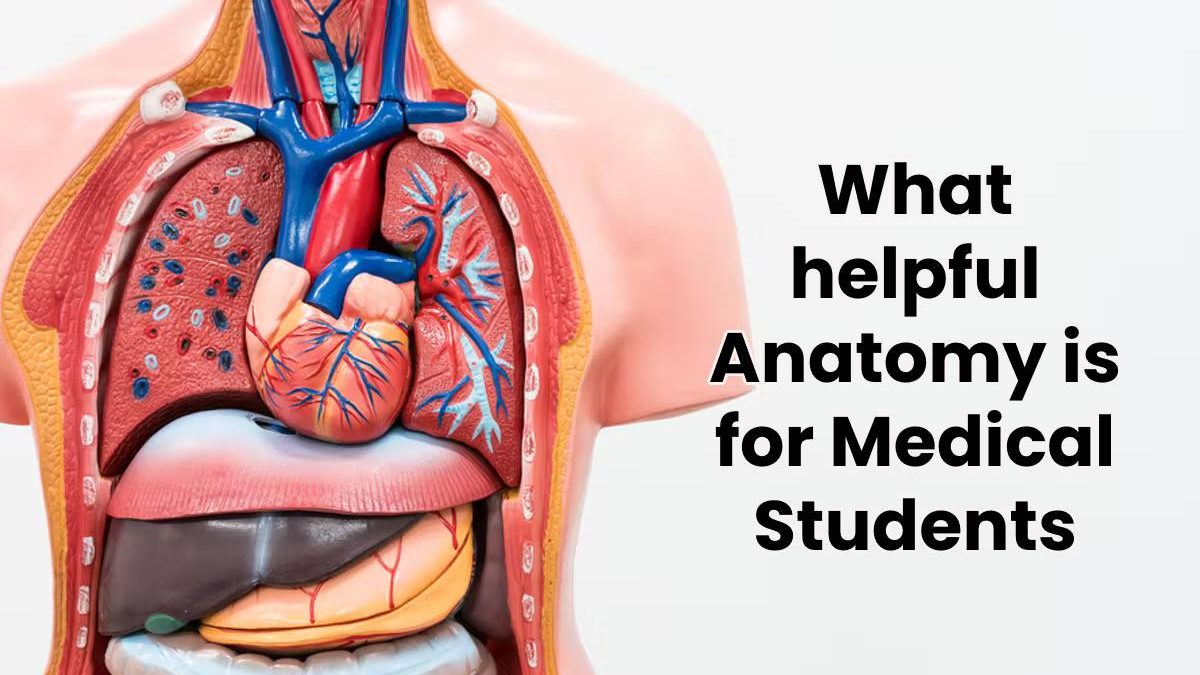Introduction
Medical students often find anatomy difficult to understand. This can be due to the complex terminology used and the unfamiliar images. In this article, we will discuss some helpful anatomy for medical students.
First, let’s take a look at the human body on a basic level. We have four limbs on each side of our body and two in the front and two in the back. Each limb is made up of many smaller parts called bones. The skeleton is what holds the muscles and organs in place. Bones are shaped like cylinders with curved ends. They are covered in a tough layer of skin called cartilage.
Now let’s take a closer look at some of the most common bones in the human body:
The Skull: The skull is made up of several different bones, including the maxilla (upper jawbone), mandible (lower jawbone), zygomatic arch (jawbone), hyoid bone (larynx), thyroid cartilage, crania (skullcap) and sphenoid bone (face). The skull protects the brain, spinal cord and eyes from injury.
The Ribcage: The ribcage is made up of twelve pairs
What do you learn in Colleges in Anatomy
Medical students will take anatomy courses in college in order to gain an understanding of the human body. Anatomy is a complex subject, and it can be difficult for students to understand everything that they are learning. In this blog post, we will discuss some of the most helpful anatomy concepts for medical students.
Anatomy is the study of the structure and function of the human body. Medical students learn about anatomy in order to understand how diseases develop and how treatments work. Anatomy classes can help students learn about the different parts of the body, how they work together, and how diseases can affect them.
One of the most important aspects of anatomy is understanding how the different parts of the body interact with each other. Medical students learn about muscles and bones in order to understand how they work. For example, muscles control movement throughout the body, while bones provide structural support. Understanding how muscles and bones work together can help doctors treat patients effectively.
Medical students also learn about organs in anatomy class. organs are responsible for many important functions in the body, including digestion and breathing. Knowing about specific organs can help doctors diagnose and treat disease properly.
Medical students also learn about blood vessels in anatomy class. Blood vessels transport
The Anatomy Lab
Medical students often find themselves in the anatomy lab. Here are some helpful tools for the medical student:
Anatomy textbooks are great for reference, but can be bulky and difficult to carry around. There are lighter versions available, but they may not have all the information that the more comprehensive books do. Online resources like PubMed can be searched for specific information on any topic related to human anatomy. Flashcards can also be a useful tool for recalling information from anatomy lectures.
The dissection table is an essential part of the anatomy lab. It allows students to dissect human cadavers without having to carry them around. The dissector should be comfortable with a hot knife and cutting board, as well as know how to avoid infection. A dissecting microscope is also helpful for examining smaller details in specimens.
Students should keep a notebook handy while in the anatomy lab to record what they are finding and how it relates to their coursework. This will help them recall information later on, when studying for exams or during residency training.
Anatomy Lessons for Medical Students
Anatomy is a subject that can be dry and difficult to understand for those who are just starting out in medical school. However, by taking some basic anatomy lessons, you will be able to better understand the functions of various body parts, as well as the diseases that can affect them. Here are five anatomy lessons that will help you become a more informed medical student:
1. The Skeleton
The skeleton is the foundation of the human body, and understanding its structure is essential for learning about disease processes and how they affect the body. Knowing where each bone is located and what functions it performs will allow you to spot abnormalities early on in a patient’s diagnosis.
2. The Musculoskeletal System
The muscles and tissues that make up the musculoskeletal system are responsible for moving our bodies around. Understanding their function and how they work together is key to diagnosing injuries and treating them effectively.
3. The Nervous System
The nervous system controls all of the muscles and organs in the body, as well as our vital functions like breathing and heart rate.Knowing how the different parts of the nervous system work together is crucial for treating patients correctly.
The Human Body
When it comes to studying anatomy, there are a few helpful diagrams that medical students can use. The human body is made up of many different parts, and each one has a specific function. There are different terms in Medical which you must learn if you are persuing medical profession, one of which is Pollex and you will also find a question regarding this Pollex term i.e pollex is the medical term for which of these parts of the human body? so you should be ready with the answer. Here are a few diagrams that will help you understand the anatomy of the human body:
The Anatomy of the Head and Neck
The Anatomy of the Spine
The Anatomy of the Pelvis and Hip Bones
Chest and it’s problems
Medical students often learn about the chest in anatomy class. However, they may not know all of the common chest problems. In this article, we will discuss some of the most common chest problems and what helpful anatomy is for medical students to know.
One of the most common chest problems is aortic aneurysm. Aortic aneurysm is a ballooning or bulging of the aorta, which is the largest artery in the body. There are several risk factors for aortic aneurysm, including age, obesity, and smoking. chest compression feedback device monitor helps medical professionals with their diagnose with chest problems. If you experience chest pain, shortness of breath, or irregular heartbeat associated with aortic aneurysm, you should see a doctor immediately.
Another common problem with the chest is thoracic outlet syndrome (TOS). TOS occurs when the cartilage that surrounds the thoracic outlet becomes stretched or damaged. This can cause pain and decreased breathing capacity due to obstruction of air flow into and out of the lungs. Treatment for TOS typically involves surgery to remove the obstruction.
If you are experiencing any symptoms related to your chest, be sure to see your doctor. Anatomy can
Conclusion
Anatomy is one of the most important subjects that medical students must learn. It is not only essential for understanding the functions and structure of the human body, but it also enables doctors to diagnose and treat illnesses by understanding how the body works. Thanks to images and videos available online, anatomy learning has never been easier. If you are looking for helpful Anatomy resources, make sure to check out our list below.
Related posts
Sidebar
Recent Posts
The Rise of Legal Tech Startups: What Law Firms Need to Know
Introduction The legal profession, often rooted in tradition and resistant to change, faces a technological revolution. Legal tech startups are…
Shiba Inu vs. Dogecoin: The Battle of the Meme Coins
In the realm of cryptocurrency, there has been an ongoing battle between two popular meme coins, Shiba Inu and Dogecoin….




Review What helpful Anatomy is for Medical Students.